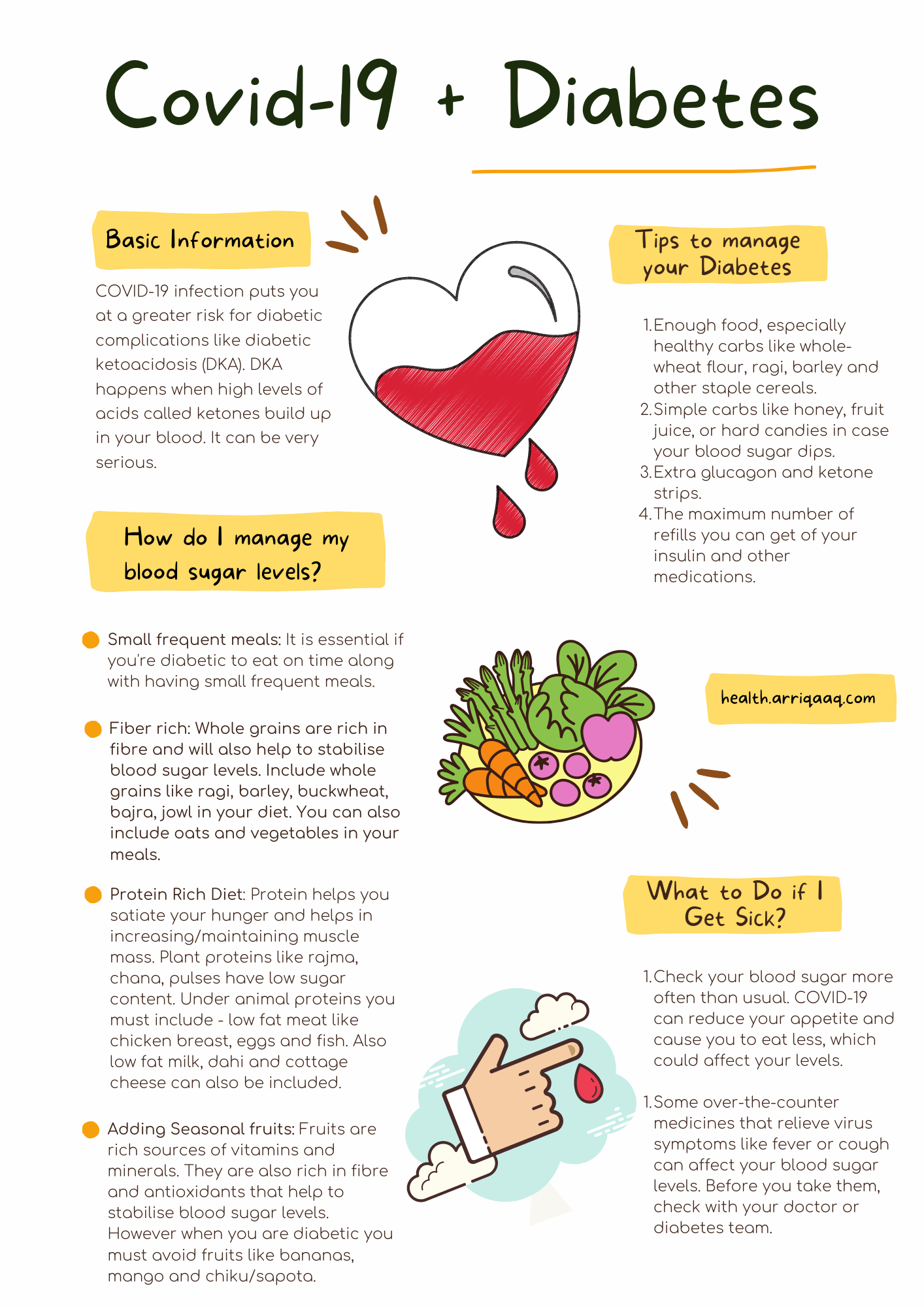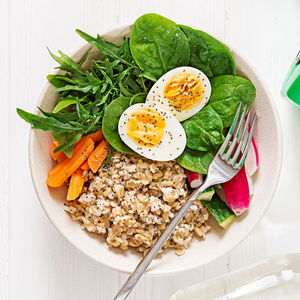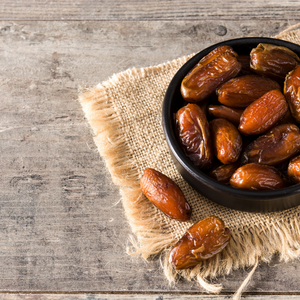Everyone needs to be careful to avoid COVID-19, especially if you have type 1 or type 2 diabetes. Your risk of catching the virus isn't higher than anyone else's, but you could have serious complications if you do get sick and if your diabetes isn't well-controlled. High blood sugar weakens the immune system.
COVID-19 infection puts you at a greater risk for diabetic complications like diabetic ketoacidosis (DKA). DKA happens when high levels of acids called ketones build up in your blood. It can be very serious. Those who are infected develop a dangerous body-wide response to it, called sepsis. To treat sepsis, doctors need to manage your body's fluid and electrolyte levels. DKA causes you to lose electrolytes, which can make sepsis harder to control.
❓Want To Know If You’re Diabetic or In The PreDiabetic Phase?
These are tests for type 1 and type 2 diabetes and prediabetes showing the normal and elevated blood sugar levels.
🥗 Healthy Nutrition – The Key To Effective Management
Healthy nutrition is an essential component of diabetes management. A well-balanced diet along with a healthy lifestyle is two of the most important aspects of managing diabetes. A diet full of foods with low glycaemic index,low on carbs and whole-grain foods is ideal.
How do I manage my blood sugar levels?
- Small frequent meals: It is essential if you're diabetic to eat on time along with having small frequent meals. (Every 2-3 hours)
- Avoid fasting and feasting
- Protein Rich Diet: Protein helps you satiate your hunger and helps in increasing/maintaining muscle mass. Plant proteins like rajma, chana, pulses have low sugar content. Under animal proteins you must include - low fat meat like chicken breast, eggs and fish. Also low fat milk, dahi and cottage cheese can also be included.
- Adding Seasonal fruits: Fruits are rich sources of vitamins and minerals. They are also rich in fibre and antioxidants that help to stabilise blood sugar levels. However when you are diabetic you must avoid fruits like bananas, mango and chiku/sapota.
According to Ayurveda Expert “Jamun seeds make up a major of Ayurvedic diabetes medicines.These are known for managing diabetes. Jamun seeds and pulp both have antidiuretic and hypoglycaemic properties”.
5. Fiber rich: Whole grains are rich in fibre and will also help to stabilise blood sugar levels. Include whole grains like ragi, barley, buckwheat, bajra, jowl in your diet. You can also include oats and vegetables in your meals.
6. Foods to be Avoided : Avoid excessive consumption of fried foods and limit consumption of foods high in sugar, carbohydrates and fat and aerated sugary drinks too. Also foods that have a high glycemic index like flour, pasta, rice, potato or white bread have to be avoided.
🥘 A Full Day’s Diabetic Meal Plan
Early morning:
- Barley water/fenugreek water/bitter gourd and spinach juice
Breakfast:
- 3-4 idli/rava idli/multigrain dosa + sambar + buttermilk
- 1 roti/methi roti + a bowl of green vegetable + curd
- Oats with milk + a boiled egg
Mid day snacks:
- Mixed Fruit bowl/1 fruit (low GI fruits only)
- Few Dried fruits (almonds+walnuts) with chia seeds
- Veg salad with chickpeas/ roasted foxnuts or makhana
Lunch:
- 1 bowl rice/buckwheat khichdi/ Ragi ball + sambar +veg /chicken curry + sprouts + curd
- Mixed vegetable pulao/ Rava Ganji + 1 cup dal/paneer + curd + sprouts
- 1 multigrain roti + 1 bowl of chicken/veg curry + sprouts/salad + curd
Evening snacks:
- Oats apple phirni/lauki halwa
- Green tea with digestive biscuits
- Bitter Gourd(karela) tikkis/ moong sprout tikkis
Dinner:
- Vegetable oats upma
- 1 roti + 1 bowl of chicken/veg curry
- Barley vegetable soup/mint vegetable and oats soup
Post dinner:
- 1glass - buttermilk/ mint lassi/ skimmed milk
🍮 Some Diabetic-Friendly Snacks And Desserts just for you!

Fig mousse:
Preparation time: 5mins
Cooking time: 25 mins
Calories per serve: 80
Ingredients:
- 125 grams of dried anjeer(figs)
- 4 grams china grass, 1/4tsp cinnamon
- 1/4 cup skimmed milk powder
- Walnuts
Method: Soak the dried figs in water for 2-3 hours. Place them in a pan along with china grass and cook till the figs turn tender. Adjust water as it cooks. Turn off heat, add cinnamon and leave it to cool. Now add the skimmed milk powder and blend in a blender. Pour into your glass, garnish with walnuts and refrigerate.
Bittergourd (Karela) Cutlets:
Bittergourd contains an insulin-like compound called polypeptide-p which has been shown to control diabetes naturally.
Preparation time: 15mins
Cooking time: 10 mins
Calories per serve: 50
Ingredients:
- ½ cup karela grated (scrape off the rugged surface)
- ⅛ cup grated carrot
- ¼ low fat paneer crumbled
- ½ cup oats and salt to taste.
Method: Apply little salt to the bitter gourd and keep it aside (2-3minutes) then squeeze it, keep the water aside. Now combine bitter gourd, carrot, paneer, oats, chaat masala and salt. Divide the mixture into portions and shape them. Heat a pan, grease with oil. Place the tikkis and cook them until golden brown.
Tips: In order to remove the bitterness, grate the bitter gourd after scraping the surface and avoid the white portion and seeds inside. Then you can apply salt, leave it for a few minutes and squeeze. The water that was kept aside can be benefitted by drinking it on adding water or tomato juice to it.
Watermelon seeds barfi:
Preparation time: 5mins
Cooking time: 7mins
Calories per serve: 100
Ingredients: All you need is watermelon seeds (20g), cardamom powder and a tbsp of jaggery.
Method: Add watermelon seeds in a blender and grind into powder. Do not over grind as it may release moisture. In a pan add jaggery and water (1/4cup). Mix well and boil on medium flame for 5-7 minutes till a thread like consistency. Turn the flame low, add the watermelon seeds powder and cardamom powder (1/4 tsp). Mix well till the mixture comes together. (5mins). Add 1tbsp coconut oil or ghee. Mix well and turn the flame off. Transfer the mixture immediately on a tray and flatten it with a spoon. The mixture will harden. Use a knife and slice the burfi in desired shapes.
Flax Seeds nibbles
Preparation time: 15mins
Baking time: 20mins
Calories per serve: 90
Ingredients:
- 2 tbsp of coarsely powdered flax seeds
- ¼ cup whole wheat flour
- ½ tbsp olive oil
- ¼ tbsp dried mixed herbs
- ¼ tbsp red chilli flakes, salt to taste.
Method: Combine all ingredients in a bowl and knead into a stiff dough using water as required. Cover this with a lid and keep aside for 15minutes. Preheat your oven at 180C for 15minutes. Divide the dough into 2 equal portions. Roll out without using any flour, trim from all sides to get a perfect square. Prick this with a fork and cut into diamond shapes (25cm) pieces using a knife. Arrange the above in a baking tray and bake till they turn light brown and crisp. Turn twice in between after every 5 minutes. Keep aside to cool. Serve or store in an airtight container.
Oats and apple delight
Preparation time: 5mins
Cooking time: 7mins
Calories per serve: 80
Ingredients:
- ¼ cup crushed oats
- 1 and 1/2 cup low fat milk
- 1/3 cup or 30g apple.
Method: Heat the low-fat milk or almond milk and bring to boil. Add the oats, cook on medium flame for 2minutes, stir continuously. Add jaggery (10g) and grated apple, mix well. Refrigerate and chill for 30 minutes.
Disclaimer: Make sure you consult your doctor before you include anything new in your diet.
🩸Tips to manage your Diabetes

Social distancing and lockdown rules may make it harder to get the supplies you need. Stock up on enough goods to last you for a couple of weeks, in case you get quarantined.
1. Make sure you have:
- Enough food, especially healthy carbs like whole-wheat flour, ragi, barley and other staple cereals.
- Simple carbs like honey, fruit juice, or hard candies in case your blood sugar dips.
- The maximum number of refills you can get of your insulin and other medications.
- Extra glucagon and ketone strips.
2. Tips to Avoid Infection
- The best way to avoid getting sick is to get vaccinated, or stay home as much as you can.
- Wash your hands or use hand sanitizer often while you’re out and when you get home.
- Also wash your hands before you give yourself a finger stick or insulin shot. Clean each site first with soap and water or rubbing alcohol.
- To protect you, everyone in your house should wash their hands often, especially before they cook for the family. And if anyone in your house is sick, they should stay in their own room, as far as possible from you.
3. What to Do if I Get Sick?
- If you start feeling sick, stay home. Check your blood sugar more often than usual. COVID-19 can reduce your appetite and cause you to eat less, which could affect your levels. You also need more fluids than usual when you're sick. Keep water close by and drink it often.
- Some over-the-counter medicines that relieve virus symptoms like fever or cough can affect your blood sugar levels. Before you take them, check with your doctor or diabetes team.
- Call your doctor if you get coronavirus-like symptoms such as a dry cough, fever, or shortness of breath. Have your most recent blood sugar and ketone readings available to share with your doctor.
👟 Here are a few home-based exercises for people with Diabetes
In response to the current COVID-19 pandemic, governments in many countries have restricted the movement of their citizens, confining them to the home environment and public exercise facilities have been closed.
Daily physical activity is an integral part of diabetes management, helping to maintain blood glucose at recommended levels.
Below are a series of daily exercises that can be performed at home, provided by ANIAD, the Italian National Association of Athletes with Diabetes.
The exercise intensity of each activity is comparable to one hour of brisk walking, resulting in an energy expenditure of 150-200 Kcal.
1. Treadmill: one-hour brisk walking (no need to run), which can also be split into three 20-minute sessions.
2. Stationary bicycle (either reclined or classic): two 15-minute sessions at variable intensity (if the equipment allows it).
3. Bodyweight exercises such as push-ups, squats, deep stationary lunges, sit-ups or crunches (to strengthen the abdomen) and forward flexes (to strengthen the lower-back muscles).
4. Joint mobility and stretching exercises that can be sourced from common workout and pilates’ routines.
References
- What People Should Know About COVID-19; WebMD. (n.d.). Diabetes and Coronavirus
- Mayo Foundation for Medical Education and Research; Diabetes. Mayo Clinic.
- What is Diabetes? Home. International Diabetes Federation - Home. (n.d.). .
- COVID-19 and Diabetes; Home. International Diabetes Federation - Home. (n.d.).
Rafa Mariam has a Diploma in Sports and Exercise Nutrition, currently pursuing her Masters in Dietetics and Food Service Management.
Ayesha Baig is a Nutritionist at Arriqaaq Health who has completed her Masters in Food and Nutrition. Her focus is on creating awareness about healthy eating and lifestyle changes along with personalised meal plans to help the community.
Like our content? Subscribe Peas!




